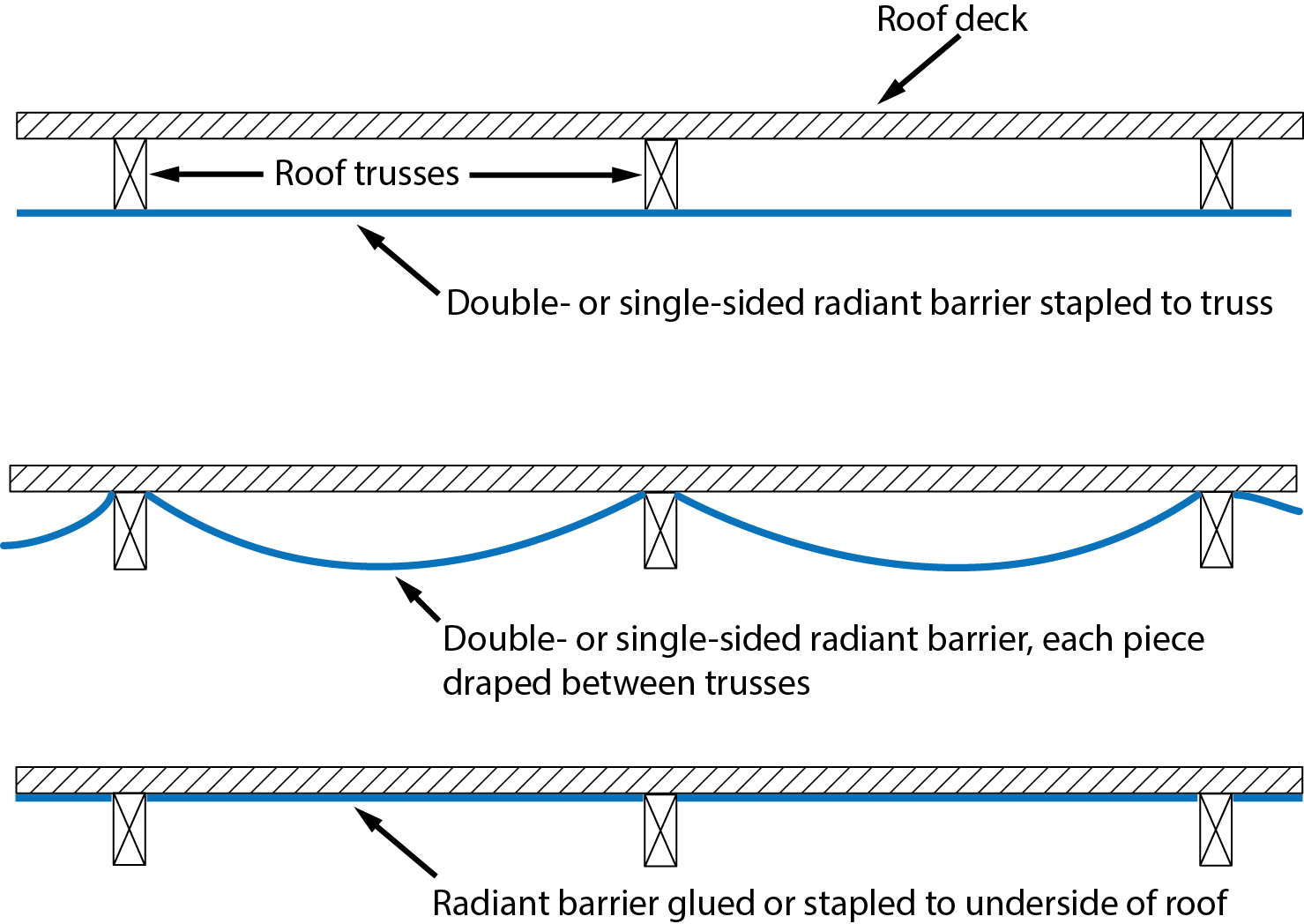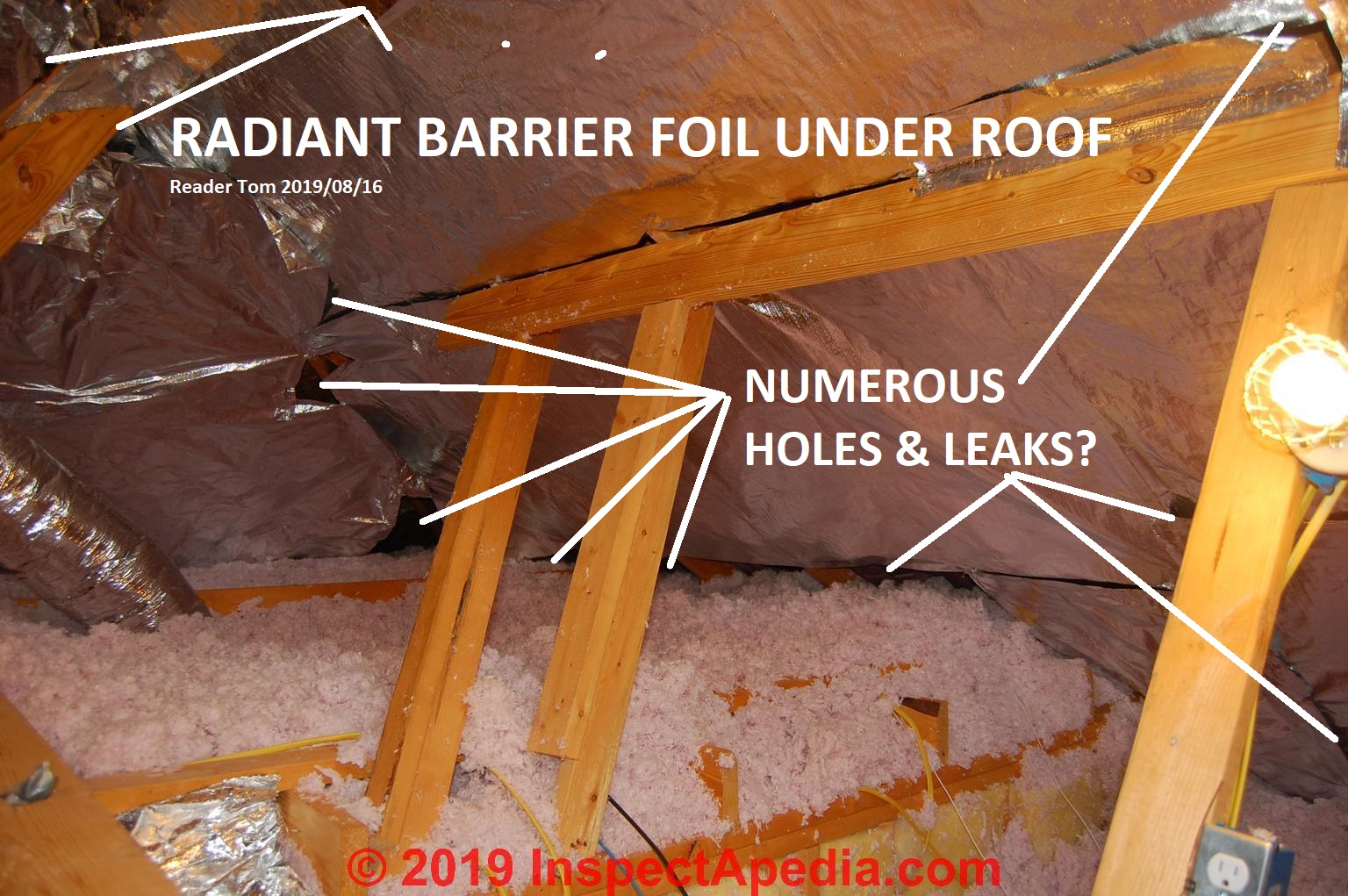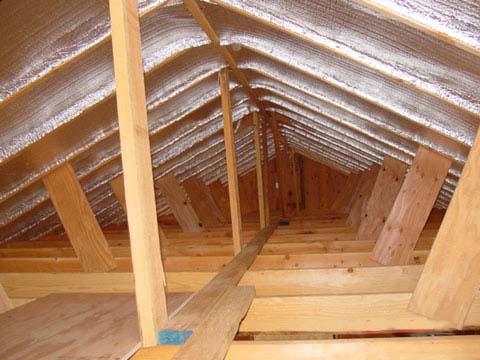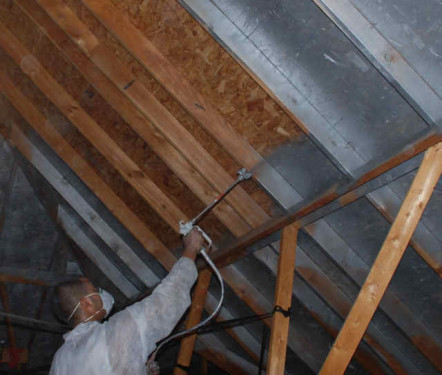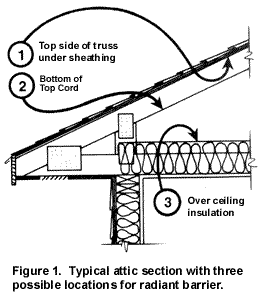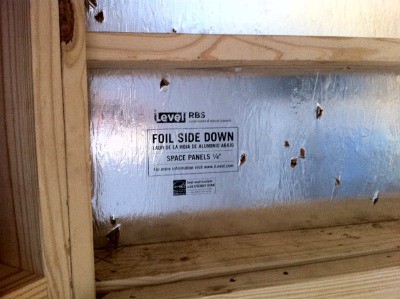However radiant barriers can also be installed in other ways such as having it infused with your roof decking or underneath tiles.
How does radiant barrier roof decking work.
The radiant barrier reflects 95 of the radiant heat back to the roofing materials which then emits over 90 of the heat out the roof almost instantly.
The temperature of the attic space increases and that heat is transferred to the building below.
How radiant barrier works a radiant barrier is designed to block reflect radiant heat energy unlike traditional insulations that are designed to slow it down by absorbing it.
By reducing the amount of radiant heat reaching the insulation in your attic the insulation remains cooler and is able to keep your home more comfortable.
How does a radiant barrier reflect block radiant heat.
Increasing summer energy consumption and cooling costs.
Radiant barriers are utilized to reduce summer heat gain in attics.
Attics heat up when the sun s radiant energy heats the shingles and the heat is transferred to the interior attic space through the roofing materials via conduction.
The radiant barrier should be installed in a manner to minimize dust accumulation on the reflective surface.
As we already mentioned this type of roof works primarily through the reflection of heat.
Radiant barriers and reflective insulation systems work by reducing radiant heat gain.
Radiant barriers are graded on three levels.
Radiant barriers reduces the radiant heat transfer from the roof to the interior of your attic.
A radiant barrier can also reduce heat transfer caused by convection by blocking convective air flow.
If you ve ever wondered why some attics are lined with shiny metallic looking material this article will explain the ins and outs of the subject.
It is meant to supplement insulation not replace it.
For a picture of this in action you can check out the product listing on amazon.
Emmisivity this is expresses as a number between 0 and 1 and it is the amount of radiant energy that is emitted back onto a black surface of equal area and temperature.
A radiant barrier works in walls too.
With a ventilated airspace behind the cladding as in a rainscreen if the next layer on the other side of that airspace is a radiant barrier it could reduce the heat flow.
The aluminum is not used for its reflective properties but for its low emittingproperties.
Radiant barrier sheathing made up of either plywood or oriented strand board osb with athin layer of aluminum facing on one side is installed to the roof rafters with the aluminumlayer facing down.
Florida solar energy center conducted a study on radiant barrier and shingle temperatures and found that the roof increased in temperature by only about 5 degrees at the hottest point of the day when the heat was entering and exiting the roof simultaneously.
A radiant barrier is typically stapled to the bottom truss chords against the deck sheathing.
Dust accumulation on the reflective surface will reduce its reflective capability.
How does it work.
To be effective the reflective surface must face an air space.
